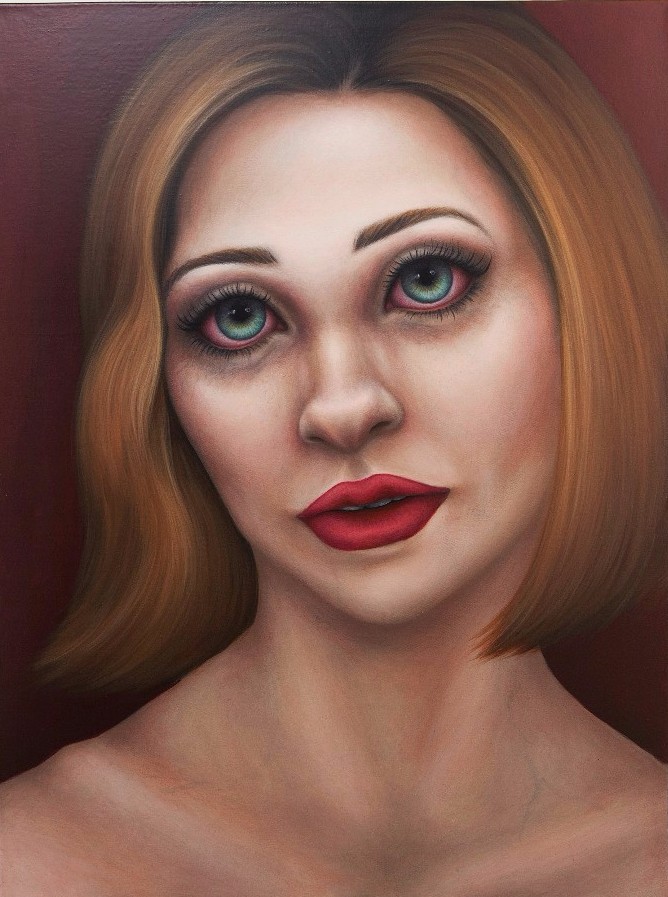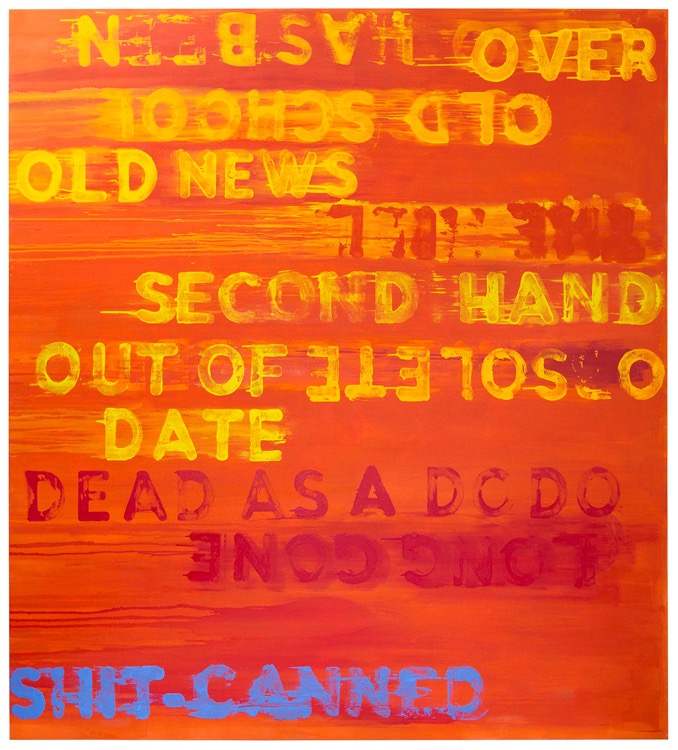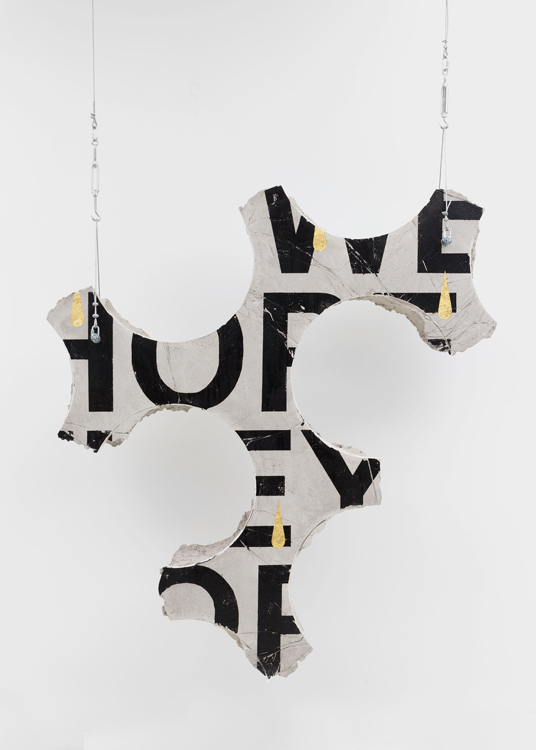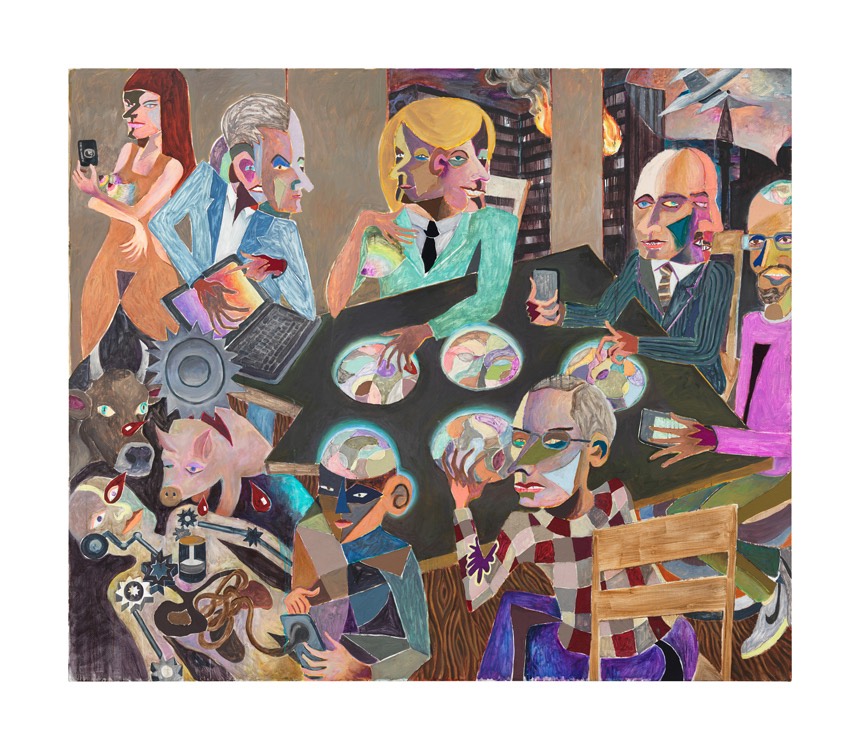STACY LEIGH – NERVES
2017-05-01Each of the recent portraits on view conjure women who appear to float in the middle distance, ungrounded. Leigh’s solitary figures – painted with acrylic on canvas – are imperious and aloof; they present themselves at a studied remove from the viewer.
The palette of these works likewise contributes to their energy. Leigh uses background colors to create undulating waves of tones. Their values gradiate as they pulse farther from the subject, recalling aura photographs. Jewel-like blues and deep maroons create a ghostly and mysterious tenor, and help to create an atmosphere of nowhere.
Leigh builds up the paintings over time, delicately rendering their slightest details with tenderness. Networked veins run below the translucent skin on Carolyn’s arm; the imprint of a bikini tan line suggests a sunburn on Amara’s voluptuous, otherwise pale thighs; a constellation of freckles cover the majority of Sadie’s body as her head tilts to the side, pubic hair slightly visible from her translucent underwear. Each painting suggests a story with no certainty, offering only clues and narrative speculation. Are these figures sexual avatars, or tense young women? Does the “nerves” of the title refer to a mental state of anxiety, or the literal muscle fibers within our bodies? These works sit in the uncanny valley of representation, eliciting, at once, empathy and mystery, desirability and emptiness.
Opposite – Madolyn
Exhibition runs through to June 11th, 2017
Fortnight Institute
60 E 4th St
New York
NY 10003





